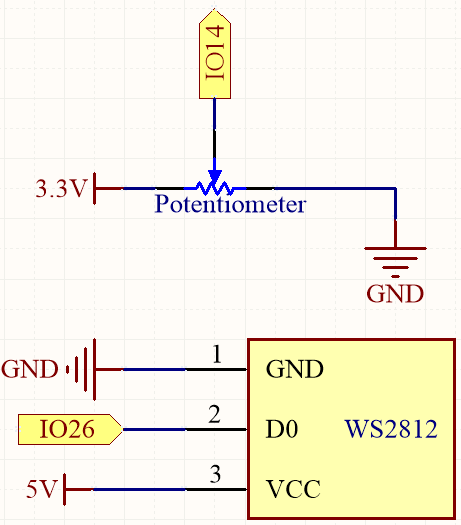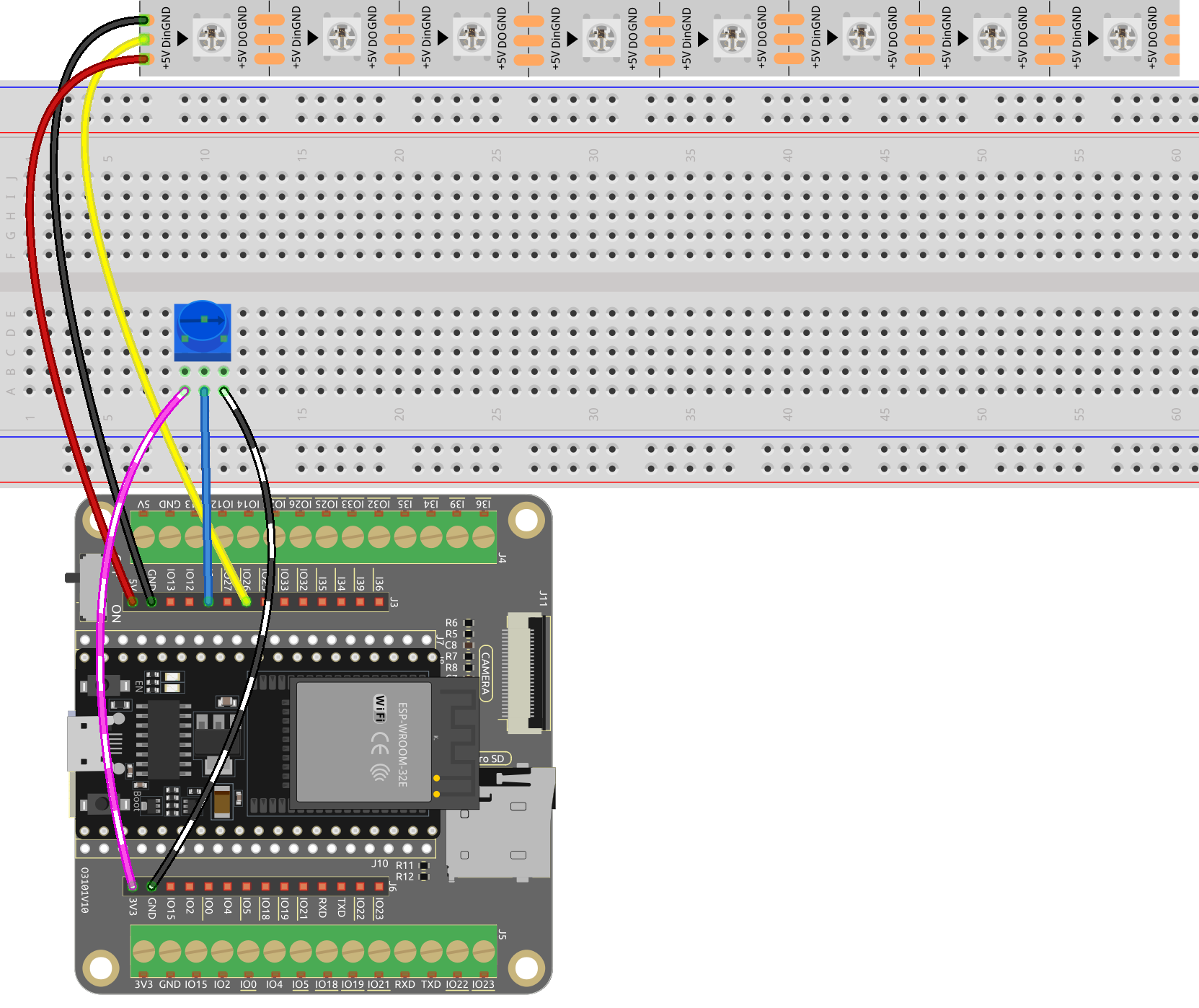6.5 Color Gradient¶
Are you ready to experience a world of color? This project will take you on a magical journey where you can control an LED strip and achieve smooth color transitions. Whether you’re looking to add some color to your home decor or seeking a fun programming project, this project has got you covered. Let’s dive into this colorful world together!
Required Components
In this project, we need the following components.
It’s definitely convenient to buy a whole kit, here’s the link:
Name |
ITEMS IN THIS KIT |
LINK |
|---|---|---|
ESP32 Starter Kit |
320+ |
You can also buy them separately from the links below.
COMPONENT INTRODUCTION |
PURCHASE LINK |
|---|---|
- |
|
Schematic

This project uses an LED strip and a potentiometer to create a color mixing effect. The potentiometer is used to adjust the hue value of the LED, which is then converted into RGB values using a color conversion function. The RGB values are then used to update the color of the LED.
Wiring

Code
Note
Open the
6.5_color_gradient.pyfile located in theesp32-starter-kit-main\micropython\codespath, or copy and paste the code into Thonny. Then, click “Run Current Script” or press F5 to execute it.Make sure to select the “MicroPython (ESP32).COMxx” interpreter in the bottom right corner.
from machine import Pin, ADC, PWM
import neopixel
import time
NUM_LEDS = 8 # Number of LEDs in the strip
PIN_NUM = 26 # LED strip
POT_PIN = 14 # Potentiometer
# Initialize the potentiometer
potentiometer = ADC(Pin(POT_PIN))
potentiometer.atten(ADC.ATTN_11DB)
# Initialize the NeoPixel LED strip
np = neopixel.NeoPixel(Pin(PIN_NUM), NUM_LEDS)
# Function to convert HSL color space to RGB color space
def hsl_to_rgb(h, s, l):
# Helper function to convert hue to RGB
def hue_to_rgb(p, q, t):
if t < 0:
t += 1
if t > 1:
t -= 1
if t < 1/6:
return p + (q - p) * 6 * t
if t < 1/2:
return q
if t < 2/3:
return p + (q - p) * (2/3 - t) * 6
return p
if s == 0:
r = g = b = l
else:
q = l * (1 + s) if l < 0.5 else l + s - l * s
p = 2 * l - q
r = hue_to_rgb(p, q, h + 1/3)
g = hue_to_rgb(p, q, h)
b = hue_to_rgb(p, q, h - 1/3)
return (int(r * 255), int(g * 255), int(b * 255))
# Function to set the color of all LEDs in the strip
def set_color(np, color):
for i in range(NUM_LEDS):
np[i] = color
np.write()
# Main loop
while True:
# Read the potentiometer value and normalize it to the range [0, 1]
pot_value = potentiometer.read() / 4095.0
hue = pot_value # Set hue value based on the potentiometer's position
saturation = 1 # Set saturation to 1 (fully saturated)
lightness = 0.5 # Set lightness to 0.5 (halfway between black and white)
# Convert the HSL color to RGB
current_color = hsl_to_rgb(hue, saturation, lightness)
# Set the LED strip color based on the converted RGB value
set_color(np, current_color)
# Sleep for a short period to allow for smooth transitions
time.sleep(0.1)
As the code runs, slowly rotate the potentiometer and you will see the color of the RGB Strip fade from red to purple.